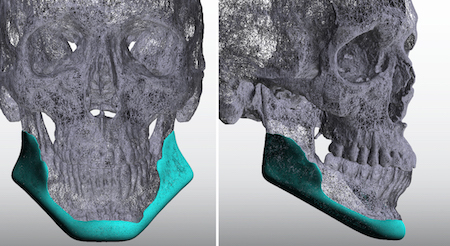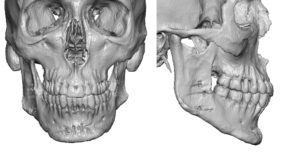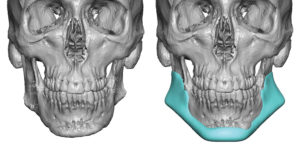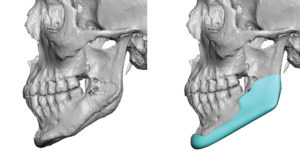Background: Orthognathic surgery is the collection of facial osteotomy procedures that have been done for more than fifty years. One of the most commonly performed is the sagittal split ramus osteotomy or the SSRO. This incredibly clever osteotomy design, as the name implies, sections the ramus or angle area of the lower jaw into two pieces sagittally. The separation of the proximal non-tooth bearing condylar-ramus bone segment from the distal tooth bearing ramus-body segment allows the lower jaw to be sagittally changed in length. The lower jaw length change, albeit longer or shorter, is determined by the establishment of a better occlusal relationship.
Once the occlusion is set in an SSRO, the ramus segments are stabilized with plate and screw fixation. In many cases this results in the recreation of smooth inferior border line from the most posterior jaw angle point all the way to the chin. But this does not always occur for a variety of reasons. The way the ramus segments were positioned intraoperatively, the type of dimensional movement that occurs when the distal bone segment is moved into occlusion and any volumetric bone loss from the soft tissue stripping needed to perform the procedure. Also, since an SSRO procedure produces a two-dimensional change in position it can not create any width changes or reliably improve the symmetry between the two jaw angle shapes.
As a result of all of these potential issues, it is not rare that jaw angle asymmetries and inferior border irregularities occur. These are not improvable by any additional bone procedures.
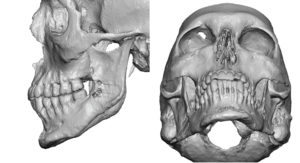
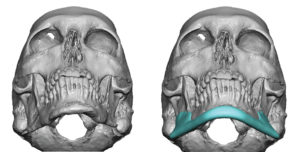
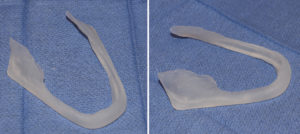
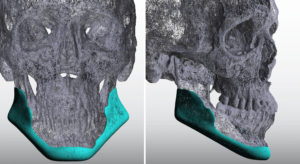
Case Highlights:
1) The sagittal split osteotomy is the most commonly performed lower jaw orthognathic surgery.
2) The sagittal splint osteotomy due to disruption of the ramus bone structure is prone to jaw angle shape deformities.
3) Creating a smoother and more symmetric jawline after orthognathic surgery can be done by the design and placement of a custom jawline implant.
Dr. Barry Eppley
Indianapolis, Indiana

